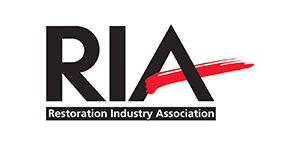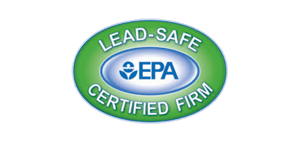Ever opened the laundry room door to find water everywhere? It’s a common problem, with 14,000 people in the U.S. facing water damage daily. So, what do you do if your laundry room floods?
Knowing what to do first can save you from big problems. These include electrical dangers, warped floors, and mold that grows fast. Acting quickly is key to lessening damage. You might need to turn off water and power, protect your stuff, and call a pro for help.
Experts like Emergency Flood Team say quick action is vital. They suggest cutting off water and power to stop more damage. Remember, insurance usually covers sudden water damage, but not neglect or poor maintenance. Taking the right steps can make a big difference.
Key Takeaways
- Turn off both the power and water supply immediately to minimize danger.
- Electrical hazards and mold growth can develop quickly; prompt action is critical.
- Frequent flooding indicates systemic issues and may require professional assessment.
- Overloading the washing machine or using too much detergent can cause flooding.
- Professional intervention is often necessary to ensure thorough drying and mold prevention.
Immediate Steps to Take in a Flooded Laundry Room
When a flooded laundry room emergency happens, quick action is key. It can greatly lessen the damage. Follow these important steps for effective cleanup.
Turn Off the Water Supply
The first thing to do is turn off the main water supply. This stops more water from coming in and reduces damage. Burst hoses or leaking pipes are common causes that need fast attention.
Cut the Power
Next, turn off the power to the laundry room at the main breaker. Water and electricity are a dangerous mix. They can cause electrocution or fires. Make sure all electrical circuits in the area are off.
Save Your Belongings
Move your belongings to a dry place to prevent more damage. Take out laundry, rugs, and other items to a safe spot. Items like wood and fabric are very vulnerable to water damage.
Contact Professionals
Lastly, call professionals like water damage restoration experts. Companies like Emergency Flood Team have the skills and tools for effective cleanup. They can check for hidden damage, dry the area, and stop mold. Getting professional help ensures a thorough and safe fix.
Common Causes of Laundry Room Floods
A flooded laundry room can cause a lot of damage and be expensive to fix. Knowing why it happens can help prevent it and lessen the damage.
Appliance Failures
Appliances, like washing machines, often cause floods. Washing machine hoses can burst or come loose, leading to leaks. It’s smart to replace these hoses every 3 to 5 years.
Using no-burst hoses made of braided stainless steel can help avoid leaks. An automatic shut-off valve can also stop water flow quickly if a leak is detected.
Plumbing Issues
Almost half of all water damage claims in homes come from plumbing problems. Issues like faulty seals, loose valves, or clogged drains can flood your laundry room. Regular checks and upkeep of your plumbing are key to avoiding these problems.
Using a moisture meter connected to a shut-off valve can detect leaks early. This can save you from expensive repairs.
Overstuffed Washing Machine
Putting too much in the washing machine can increase the risk of leaks by 30%. The extra weight can damage the machine. Washing smaller loads helps prevent leaks and makes your machine last longer.
Also, having a drain pan can help protect your floors from water damage, even if you’re on an upper floor.
Too Much Detergent
Using too much or the wrong detergent can cause about 10% of washing machine overflows. Too many suds can block drains and make the machine overflow. Always follow the detergent instructions to avoid flooding and water damage.
What do you do if your laundry room is flooded?
Discovering a flooded laundry room can be overwhelming. But, knowing how to act can ease your worries. First, stop the water source right away. This step is key to lessening damage and stopping mold.
Make sure to unplug appliances to avoid electrical dangers. Removing standing water is also critical. Use mops, towels, or a wet/dry vacuum to do this.
Quickly getting rid of water and moisture is important. It helps prevent more damage and mold, which can grow in 24 to 48 hours. For severe cases, getting professional help is best. They have the right tools like air movers and dehumidifiers.
Finding out why the flood happened is also important. Common reasons include appliance failures, broken hoses, clogged drains, and loose valves. Taking action quickly, within 24 hours, is key to avoid more damage and mold.
Regular maintenance of your laundry room appliances can help prevent floods. This includes using no-burst hoses and moisture meters. These tools can detect leaks early and prevent big problems.
It’s also wise to turn off the water supply to hoses when not in use. Consider using systems like catch basins or drain pans to reduce risks. These steps can help protect your laundry room.
About 50% of homeowners face water damage from appliance failures. Replacing old hoses every 5 years is a good idea. Using the right amount of detergent can also prevent overflow issues. Lastly, don’t forget to get flood insurance to cover unexpected costs.
Conclusion
What do you do if your laundry room floods? Knowing what to do first is key. Turn off the water and power, save important items, and call experts. This can lessen the damage.
Understanding why it flooded is also important. Issues like broken appliances, clogged pipes, and too much stuff in the washer can cause problems. Using the right detergent helps too.
Washing machine hoses need to be replaced every 4-5 years. Regular checks can save you money. Make sure drain hoses are tight and use automatic shut-off valves to avoid floods.
Water damage can cost a lot, over $14,000 on average in the U.S. It’s a big part of insurance claims. Keeping up with maintenance is vital to avoid these costs.
By following these tips, you can keep your home safe and working well. Being ready for a flooded laundry room is important.




















